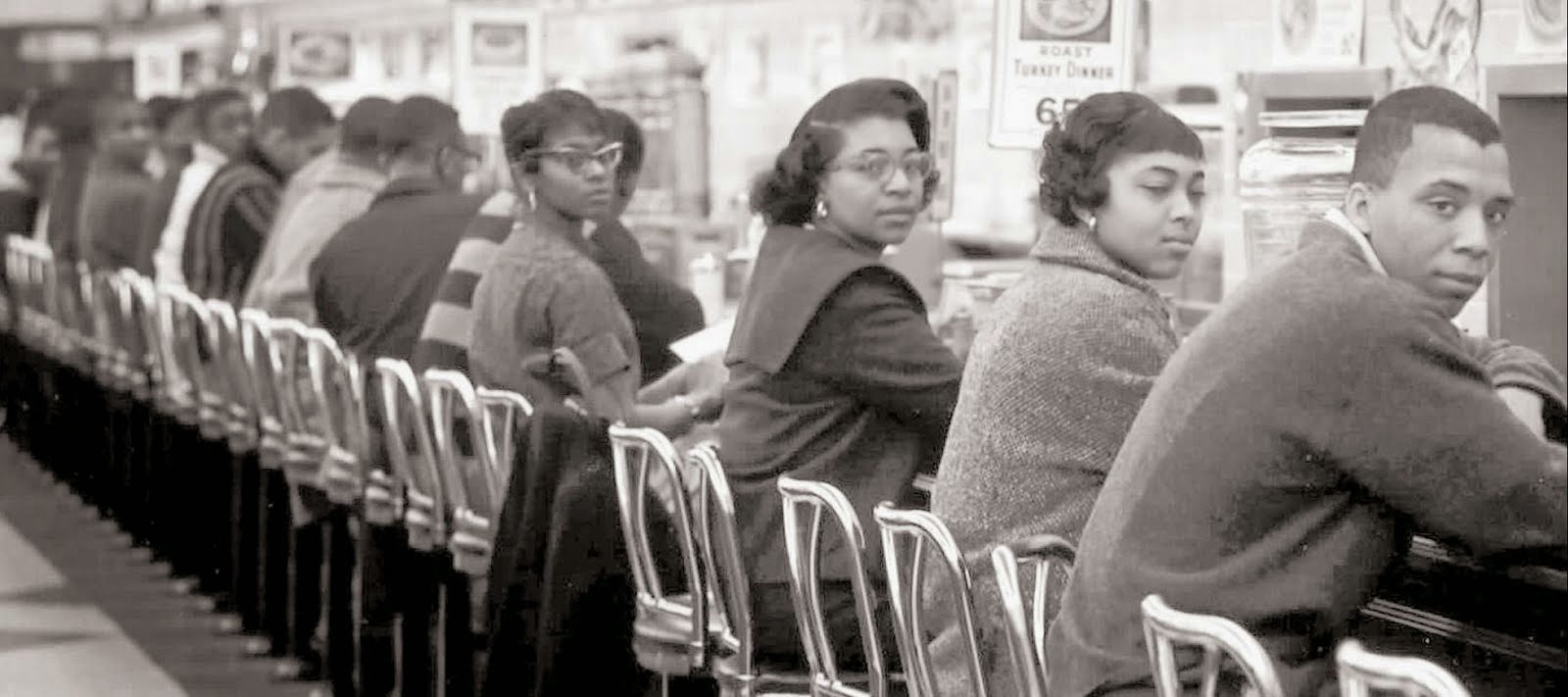Here is a link if you would like to hear the songs
(Please take a listen. You won’t regret it!!)
While
reading the autobiography of Anne Moody, especially during the movement phase
of her life, I constantly ran into the mentioning of freedom songs. These songs
were commonly sung, as stated in her book, during protests, at the commencement
of mass meetings, and at their ends. She would relate, at times, that the
singing of these songs would go on for a duration of hours on end. Seeing that
she took time to mention these songs, I concluded that they ran deeper in
significance than just something to get the crowd pumped up or to signal the
beginning and end of a meeting. They represented and spoke of a long history of
struggle amongst African Americans. They also spoke of hope for a better future
and were a source of strength for African-Americans and a way to lament their
plight.
Freedom
songs did not randomly come about during the civil rights movement. They were
adaptations of the sorrowful songs sung by African-Americans during the time of
slavery. These songs were used as a coping mechanism that helped slaves endure
the pain and suffering of slavery. However, these songs were not always ones of
sorrow; they were oftentimes, songs of strategy, with lyrics that encoded the
pathway to freedom and whose decryption could only be achieved by slaves. One
such song is entitled Wade in the Water. The lyrics are as follows:
Chorus: Wade in the Water, wade in the water
children.
Wade in the Water. God's gonna trouble the
water.
Who are those children all dressed in Red?
God's gonna trouble the water.
Must be the ones that Moses led.
God's gonna trouble the water.
Chorus.
Who are those children all dressed in White?
God's gonna trouble the water.
Must be the ones of the Israelites.
God's gonna trouble the water.
Chorus.
Who are those children all dressed in Blue?
God's gonna trouble the water.
Must be the ones that made it through.
God's gonna trouble the water.
Chorus.
Harriet Tubman, a prominent
figure of the Underground Railroad, would use this song to signal to runaway
slaves to get off the trail and into the water so that slavecatchers’ dogs
couldn’t detect their scent. This method of escape is synonymous with the
Israelites’ journey to freedom through the Red Sea, which is why it is referred
to in the song. Slaves identified with the Israelites of the Bible, who were a
people oppressed by a corrupt and evil power just as they were themselves. The
similarities between the Israelites plight and their own assured them that God
was on their side and gave them hope for freedom.
The freedom songs of the Civil Rights
Movement are a direct result of the sorrowful songs heard frequently from the
plantations of slavery. In conclusion, freedom songs are more than a nice
harmony of lyric, beat, and rhythm . as stated by Martin Luther King Jr., “the freedom songs are the soul of
the movement. They are more than just incantations of clever phrases designed
to invigorate a campaign; they are as old as the history of the Negro in
America. They are adaptations of the songs the slaves sang — the
sorrow songs, the shouts for joy, the battle hymns and the anthems of our
movement. I have heard people talk of their beat and rhythm, but we in the
movement are as inspired by their words. 'Woke Up This Morning with My Mind
Stayed on Freedom' is a sentence that needs no music to make its point. We
sing the freedom songs today for the same reason the slaves sang them, because
we too are in bondage and the songs add hope to our determination that 'We
shall overcome, Black and white together, We shall overcome someday.
Here are some links if you would like to hear the
songs (Please take a listen. You won’t regret it!!)
Sources:
